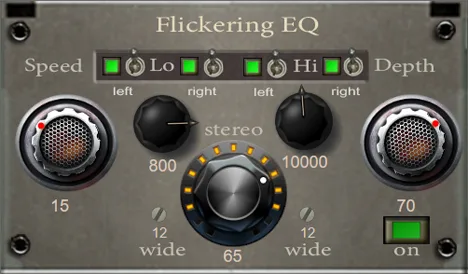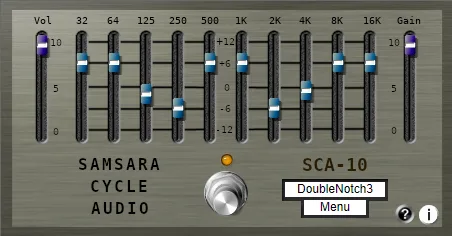Flickering EQ: Dynamic Equalization for Modern Sound Design
In the world of audio processing, equalization plays a fundamental role, allowing for the shaping of the tonal balance and character of audio material. From simple cutting of unwanted frequencies to subtle boosting of key elements – equalizers are an indispensable tool for both musicians and sound engineers.
What is a Dynamic Equalizer?
Unlike traditional static equalizers, where the band settings remain unchanged regardless of the signal level, a dynamic equalizer combines the functionality of an equalizer and a compressor (or expander) in a single band. This means that the amount of gain or attenuation of a specific frequency band is controlled dynamically – it changes depending on the signal level in that same band or in the “sidechain.”
Imagine the situation: a vocal track sounds great, but at certain words, an unpleasant resonance appears at one frequency. With a static equalizer, you would have to constantly attenuate this frequency, which would make the vocals dull in those moments when there is no resonance. A dynamic equalizer solves this problem: you set up a band so that attenuation occurs *only* when the signal level at this problematic frequency exceeds a set threshold. This allows you to maintain naturalness of sound, reacting only to peaks or specific moments.
Advantages of Flickering EQ
Flickering EQ, developed by Yuri Semenov, is an example of such a dynamic tool. Its key advantage lies in the ability to finely and adaptively influence the frequency spectrum. Instead of “burning out” or “constantly boosting” frequencies, you can make the equalizer react only when it’s really needed. This opens the door to a cleaner, more transparent, and professional mix.
Using a dynamic equalizer, such as Flickering EQ, provides a number of significant advantages:
- Preservation of tonal balance: Influence on frequencies occurs only when necessary, which minimizes unwanted changes in the overall sound.
- Effective suppression of resonances: Automatically “catches” and suppresses problematic resonant frequencies that occur only at certain notes or signal levels.
- Control over sibilants: Can be used as an advanced de-esser to tame harsh “s” and “sh” sounds in vocals.
- Highlighting or suppression of instruments: Allows you to boost the attack of drums or suppress bass rumble only when they become too prominent.
- More natural sound: Processing is less noticeable and aggressive compared to the constant influence of a static equalizer.
Application in Your Production
The dynamic equalizer Flickering EQ will find its place in a variety of scenarios:
- Mixing vocals: Taming sibilants, controlling the “loudness” of certain vowels, suppressing unwanted frequencies that appear only at high levels.
- Working with bass: Controlling “rumbling” at low frequencies or boosting the attack for better readability in the mix.
- Processing guitars: Reducing sharpness in high frequencies or taming the resonances of the acoustic guitar body.
- Mastering: Fine adjustment of the final mix, for example, a slight boost of “air” or suppression of “mud” only in loud areas.
- Sound design: Creating interesting dynamic effects that respond to the intensity of the sound.
Flickering EQ offers musicians and sound engineers a powerful tool for achieving a clean, controlled, and dynamic sound. Its flexibility makes it a valuable addition to your plugin arsenal.
Compatibility
The Flickering EQ plugin is available in VST and AU formats, providing wide compatibility with most modern DAWs on Windows (32-bit and 64-bit) and MacOS operating systems. This allows you to integrate it into your workflow regardless of your chosen platform.
Overall, Flickering EQ is more than just an equalizer. It’s an intelligent tool that responds to your sound, helping you solve complex tonal problems while maintaining the naturalness and dynamics of your audio material. Try Flickering EQ and experience the difference that dynamic equalization can make.



